
views
For one, the lead pair, Aishwarya Rai and Abhishek Bachchan's off-screen 'chemistry' seems to be more a source of curiosity and intrigue than the interaction between Nawab Sultan and Umrao Jaan Ada. In a day and age where any publicity is good publicity, it is acceptable by all means, but personally one feels, a little bit of a disservice to the beautiful literary work that is Umrao Jaan Ada.
The other is of course, the whole comparison between the old and the 'remake' debate, which to one's mind, seems completely unnecessary. Written by Mirza Hadi Ruswa in 1905, Umrao Jaan Ada was perhaps the first great modern Urdu novel. Ruswa interwove his memoir of a 19th century tawaif (courtesan) of Lucknow with a lively dialogic frame-narrative, in which the courtesan and author, both grown old, reminisce, tease one another, and quote copious ghazal poetry. Whether or not it was fictional or not is unimportant, what is important is the radical for its times sub-text that Ruswa so beautifully narrated - the plight of upper-class women, whether begums (respectable but housebound wives) or tawaifs (alluring and educated but socially-disapproved courtesans), as birds equally caged by patriarchal double standards.
Umrao Jan Ada is perhaps one of the most enigmatic, and forgotten female figures in South Asian literature. To date, the question of her existence, her beauty, her scholarly abilities and her poetic gifts remain a mystery. The book is an account of Umrao's life, documented by a close friend and supposedly dictated by Umrao. While the novel offers no twists and turns shuttling the reader into a "what happens next?" frenzy, it is a remarkable and very effective attempt to capture the essense of what it meant to be a courtesan in royal india. The novel weaves Umrao's story with a delicate sprinkiling of poetry, royal societal dynamics, as well as an indepth glance at a long since forgotten profession.
Ruswa himself described the circumstances under which Umrao Jan Ada came to be written: one evening, at a gathering of his friends where poetry was being read and discussed, a woman from the next door apartment was heard to voice her appreciation of a couplet that Ruswa had recited. Ruswa then had a word with her; she was persuaded to join the group, where she recited a verse whose last lines were:
"Who will listen to the tale of my woeful heart?
Far and wide have I wandered on the face of this earth
And I have much to impart."
At Ruswa's prompting, Umrao related her life to him over several sittings, and those narratives Ruswa committed to writing; it is even possible, as Susie Tharu has suggested, that Umrao Jan herself authored the work, but allowed its appearance under Ruswa's name. It is in Umrao's words, in any case, that the narrative was to find shape.
Umrao Jaan Ada is a literary idea and work that on account of its universal visual appeal is open to as many interpretations as there are people who read it. The Ramayana has been made a number of times, and so has Devdas, so what is wrong with one filmmaker re-presenting a story as he interprets it?
When Muzaffar Ali adapted the novel as a picture for the first time 25 years ago, he also took a lot of liberties with the novel when he presented a linear account of Umrao's early life from childhood on, ending soon after the Rebellion of 1857. Where the literary Umrao admits to "never having really loved a man," the cinematic Umrao has a poignant and lingering romance. The chronology of events is drastically altered as well, and of course a great deal is omitted. Nevertheless, Ali's film is lovely in its own right, and apart from offering fine performances by renowned actors and gorgeous songs and dances, it succeeds remarkably well in capturing much of the atmosphere of the novel, which both celebrates and problematizes the world of the chowk-the prostitute's quarter of old Lucknow.
Umrao's romantic idyll with Nawab Sultan occupies much more of the film than it does of the novel, but in both it is repeatedly frustrated by a series of misfortunes that remind her of her status as a woman who is so looked down upon by the society that she can never truly claim a man.
So the whole brouhaha over whether Umrao Jaan should be wearing the controversial 'topi' seems a tad inconsequential when compared to the basic premise of the film and the story on which it is based - the plight of the girl child which has remained unchanged ever since the novel was first written - to the times when it is being made into a film.
By according women a voice, in howsoever attenuated a form, the novel, Umrao Jan Ada may well have contributed to the reformulation of important social questions and hope the film rises above its trivialities and does the same.
About the AuthorAarti Singh author intro...Read Morefirst published:October 30, 2006, 21:00 ISTlast updated:October 30, 2006, 21:00 IST
window._taboola = window._taboola || [];_taboola.push({mode: 'thumbnails-mid-article',container: 'taboola-mid-article-thumbnails',placement: 'Mid Article Thumbnails',target_type: 'mix'});
let eventFire = false;
window.addEventListener('scroll', () => {
if (window.taboolaInt && !eventFire) {
setTimeout(() => {
ga('send', 'event', 'Mid Article Thumbnails', 'PV');
ga('set', 'dimension22', "Taboola Yes");
}, 4000);
eventFire = true;
}
});
window._taboola = window._taboola || [];_taboola.push({mode: 'thumbnails-a', container: 'taboola-below-article-thumbnails', placement: 'Below Article Thumbnails', target_type: 'mix' });Latest News
It is one of the most awaited films this year and as Umrao Jaan prepares to resurrect on November 3, one feels the reasons for the many debates and noises around it are all too trivial.
For one, the lead pair, Aishwarya Rai and Abhishek Bachchan's off-screen 'chemistry' seems to be more a source of curiosity and intrigue than the interaction between Nawab Sultan and Umrao Jaan Ada. In a day and age where any publicity is good publicity, it is acceptable by all means, but personally one feels, a little bit of a disservice to the beautiful literary work that is Umrao Jaan Ada.
The other is of course, the whole comparison between the old and the 'remake' debate, which to one's mind, seems completely unnecessary. Written by Mirza Hadi Ruswa in 1905, Umrao Jaan Ada was perhaps the first great modern Urdu novel. Ruswa interwove his memoir of a 19th century tawaif (courtesan) of Lucknow with a lively dialogic frame-narrative, in which the courtesan and author, both grown old, reminisce, tease one another, and quote copious ghazal poetry. Whether or not it was fictional or not is unimportant, what is important is the radical for its times sub-text that Ruswa so beautifully narrated - the plight of upper-class women, whether begums (respectable but housebound wives) or tawaifs (alluring and educated but socially-disapproved courtesans), as birds equally caged by patriarchal double standards.
Umrao Jan Ada is perhaps one of the most enigmatic, and forgotten female figures in South Asian literature. To date, the question of her existence, her beauty, her scholarly abilities and her poetic gifts remain a mystery. The book is an account of Umrao's life, documented by a close friend and supposedly dictated by Umrao. While the novel offers no twists and turns shuttling the reader into a "what happens next?" frenzy, it is a remarkable and very effective attempt to capture the essense of what it meant to be a courtesan in royal india. The novel weaves Umrao's story with a delicate sprinkiling of poetry, royal societal dynamics, as well as an indepth glance at a long since forgotten profession.
Ruswa himself described the circumstances under which Umrao Jan Ada came to be written: one evening, at a gathering of his friends where poetry was being read and discussed, a woman from the next door apartment was heard to voice her appreciation of a couplet that Ruswa had recited. Ruswa then had a word with her; she was persuaded to join the group, where she recited a verse whose last lines were:
"Who will listen to the tale of my woeful heart?
Far and wide have I wandered on the face of this earth
And I have much to impart."
At Ruswa's prompting, Umrao related her life to him over several sittings, and those narratives Ruswa committed to writing; it is even possible, as Susie Tharu has suggested, that Umrao Jan herself authored the work, but allowed its appearance under Ruswa's name. It is in Umrao's words, in any case, that the narrative was to find shape.
Umrao Jaan Ada is a literary idea and work that on account of its universal visual appeal is open to as many interpretations as there are people who read it. The Ramayana has been made a number of times, and so has Devdas, so what is wrong with one filmmaker re-presenting a story as he interprets it?
When Muzaffar Ali adapted the novel as a picture for the first time 25 years ago, he also took a lot of liberties with the novel when he presented a linear account of Umrao's early life from childhood on, ending soon after the Rebellion of 1857. Where the literary Umrao admits to "never having really loved a man," the cinematic Umrao has a poignant and lingering romance. The chronology of events is drastically altered as well, and of course a great deal is omitted. Nevertheless, Ali's film is lovely in its own right, and apart from offering fine performances by renowned actors and gorgeous songs and dances, it succeeds remarkably well in capturing much of the atmosphere of the novel, which both celebrates and problematizes the world of the chowk-the prostitute's quarter of old Lucknow.
Umrao's romantic idyll with Nawab Sultan occupies much more of the film than it does of the novel, but in both it is repeatedly frustrated by a series of misfortunes that remind her of her status as a woman who is so looked down upon by the society that she can never truly claim a man.
So the whole brouhaha over whether Umrao Jaan should be wearing the controversial 'topi' seems a tad inconsequential when compared to the basic premise of the film and the story on which it is based - the plight of the girl child which has remained unchanged ever since the novel was first written - to the times when it is being made into a film.
By according women a voice, in howsoever attenuated a form, the novel, Umrao Jan Ada may well have contributed to the reformulation of important social questions and hope the film rises above its trivialities and does the same.












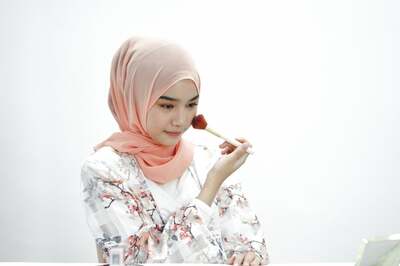
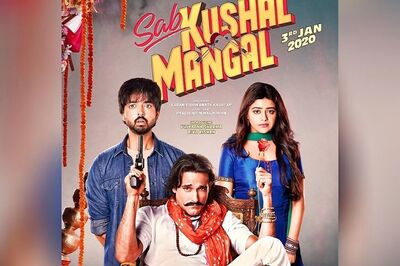
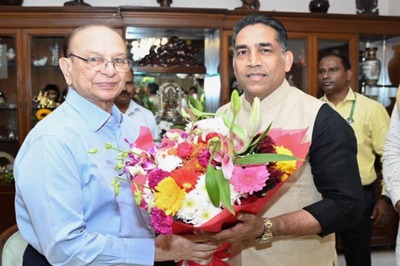
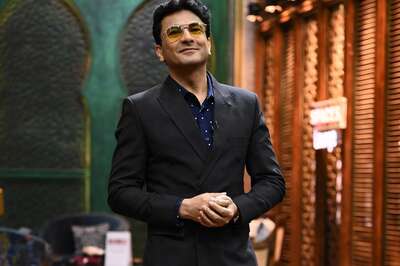

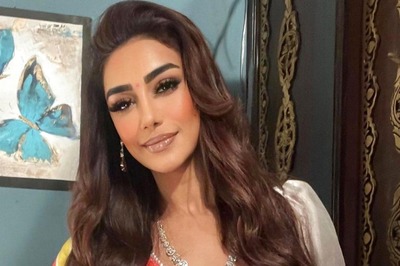

Comments
0 comment